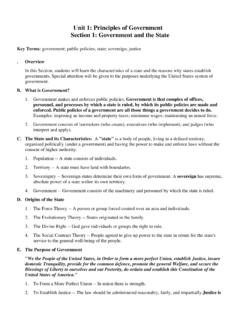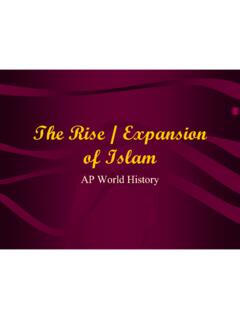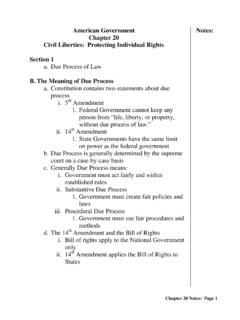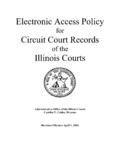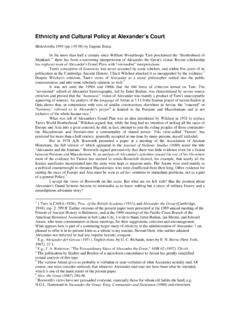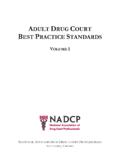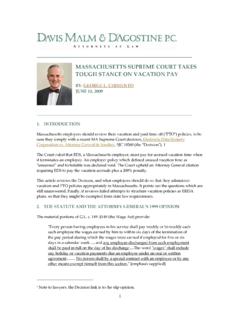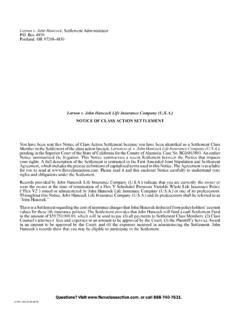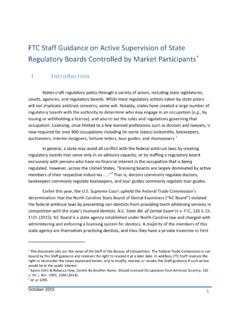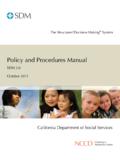Transcription of ESSENTIAL COURT CASES FOR AP GOVERNMENT …
1 ESSENTIAL COURT CASES FOR AP GOVERNMENT Note: The list of important CASES can be endless. What appears below are CASES that during the normal course of an AP GOVERNMENT one would more than likely discover and/or discuss. What is important for the students is that through a discussion of these CASES (and others not appearing below) they understand the relationships of the branches of GOVERNMENT , the major principles of our Constitution, and a better understanding of the policy making process. TOPIC case SIGNIFICANCE Constitutional Foundations & Underpinnings Marbury v. Madison (1803) COURT establishes Judicial Review concept- affirms the COURT s position as a coequal branch of GOVERNMENT having considerable influence on the politics of GOVERNMENT and direction of public policy.
2 McCulloch v. Maryland (1819) Marshall COURT defines what is meant by necessary and proper and established the primacy of federal GOVERNMENT power over state GOVERNMENT . Gibbons v. Ogden (1824) Marshall COURT says only national gov t can regulate interstate commerce, not individual states per Art I, sect. 8 commerce clause. United States v. Lopez (1995) United States v. Morrison (2000) Rehnquist COURT decision in what some call the devolution federalism era. For years Congress had used the interstate commerce clause to encroach into a number of areas normally reserved to the states under the 10th Amendment. The commerce clause does not give Congress unlimited powers more appropriately reserved to the states.
3 This begins a policy of the reigning in of creeping federalism . In the Lopez case , the majority opinion presents an excellent overview of the various interpretations and phases of federalism since the Founding. Civil Liberties Gitlow v. New York (1925) COURT nationalizes the Bill of Rights for the first time ( Incorporation Doctrine ). By the 1960 s, the COURT will apply almost all of the provisions of the Bill of Rights to the states through the 14th Amendment s Due Process Clause. Weeks v. United States (1914) Wolf v. Colorado (1946) Mapp v. Ohio (1961) Establishment and development of the Exclusionary Rule - illegally obtained evidence cannot be used against a defendant at trial. Made applicable to the states in Mapp.
4 Gideon v. Wainwright (1963) Malloy v. Hogan (1964) Miranda v. Arizona (1966) Landmark rulings dealing with the rights of the accused, GOVERNMENT interrogations, and the right to counsel. Everson v. Bd. of Ed. (1947) Engel v. Vitale (1962) Lemon v. Kurtzman (1971) Establishment Clause and school prayer- Public school policy that permits, endorses, or encourages prayer violates the 1st Amendment. Prayer in school is allowed if it is student initiated, student-led, and voluntary Cantwell v. Connecticut (1940) City of Boerne v. Flores (1997) Free Exercise Clause- Latter case struck down the Religious Freedom Restoration Act of 1993 saying that Congress may enact legislation enforcing constitutional rights established by the COURT , but it does not have the power to expand or enlarge those religious freedom rights.
5 Schenck v. United States (1919) Free Speech- COURT establishes the clear and present danger doctrine with respect to subversive and unpopular speech. This is the case in which Justice Holmes uses the famous falsely shout fire in a theater and cause a panic ESSENTIAL COURT CASES FOR AP GOVERNMENT Note: The list of important CASES can be endless. What appears below are CASES that during the normal course of an AP GOVERNMENT one would more than likely discover and/or discuss. What is important for the students is that through a discussion of these CASES (and others not appearing below) they understand the relationships of the branches of GOVERNMENT , the major principles of our Constitution, and a better understanding of the policy making process.
6 Analogy in drawing the line on the limits of free speech. Civil Liberties (cont.) New York Times Co. v. United States (1971) Censorship CASES ( prior restraint ) - Speech that addresses matters of public concern may not be censored. Miller v. California (1973) Reno v. ACLU (1997) Often referred to as the Miller Test , the COURT stipulated three tests for determining what is obscene: (1) whether the average person, applying local community standards, would find that a work, taken as a whole, appeals to a prurient interest; (2) whether the work depicts in a patently offensive way sexual conduct specifically defined as obscene in law; and (3) whether the work lacks serious literary, artistic, political or scientific value.
7 In the Reno v. ACLU case , the COURT struck down provisions of the Communications Decency Act of 1996 which attempted to limit minors access to internet pornography. The law which prohibited indecent and patently offensive material found on the internet was too vague and could result in a chilling effect . New York Times Co. v. Sullivan (1964) The COURT defined what is meant by libel and slander as it pertains to public officials and public figures. Individuals must show that false statements were made and publicized with malice and knowledge of their falsity or with reckless disregard of their truth or falsity This standard makes it very hard for public figures to win libel suits. Tinker v. Des Moines (1969) Texas v.
8 Johnson (1989) Landmark symbolic speech CASES . In Tinker, student expression (wearing of armbands) is protected so long as it does not cause a material disruption or substantial interference . In Texas v. Johnson, the burning of a flag (which the COURT determined to be only a symbol) in public is protected by the 1st Amendment. Furman v. Georgia (1972) Gregg v. Georgia (1976) In Furman, the COURT ruled that the death penalty violated the 8th Amendment because of the indiscriminate and inconsistent manner in which it was imposed. Four years later in Gregg, the COURT upheld a state law that contained sufficient standards to pass constitutional muster to eliminate excessive jury discretion in imposing the death penalty.
9 Griswold v. Connecticut (1965) Landmark ruling in which the COURT establishes that there is a penumbra of rights. These are civil liberties closely attached to the Bill of Rights. In this case , the right of consenting adults to use birth control is a privacy right protected under the 4th, 9th, and 14th Amendments. ESSENTIAL COURT CASES FOR AP GOVERNMENT Note: The list of important CASES can be endless. What appears below are CASES that during the normal course of an AP GOVERNMENT one would more than likely discover and/or discuss. What is important for the students is that through a discussion of these CASES (and others not appearing below) they understand the relationships of the branches of GOVERNMENT , the major principles of our Constitution, and a better understanding of the policy making process.
10 Roe v. Wade (1973) Webster v. Reproductive Health Services (1989) Planned Parenthood v. Casey (1992) Right to privacy and the abortion issue. These three CASES show how the COURT established the absolute right to choice (Roe v. Wade) through the present interpretation which says that the right exists but states may pass restrictions so long as it does not impose an undue hardship or burden on the mother (Planned Parenthood v. Casey). Civil Liberties (cont.) Cruzan v. Director Missouri Dept of Health (1990) Right to privacy and right to die. COURT said that competent people have a right to de and incompetent persons must have a surrogate with clear and convincing evidence that this is what the incompetent patient desired.
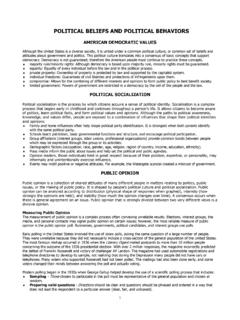

![Europe in the Postclassical Era.ppt [Read-Only]](/cache/preview/3/f/0/5/a/f/4/a/thumb-3f05af4abb01b691e0d84337014c46bf.jpg)

